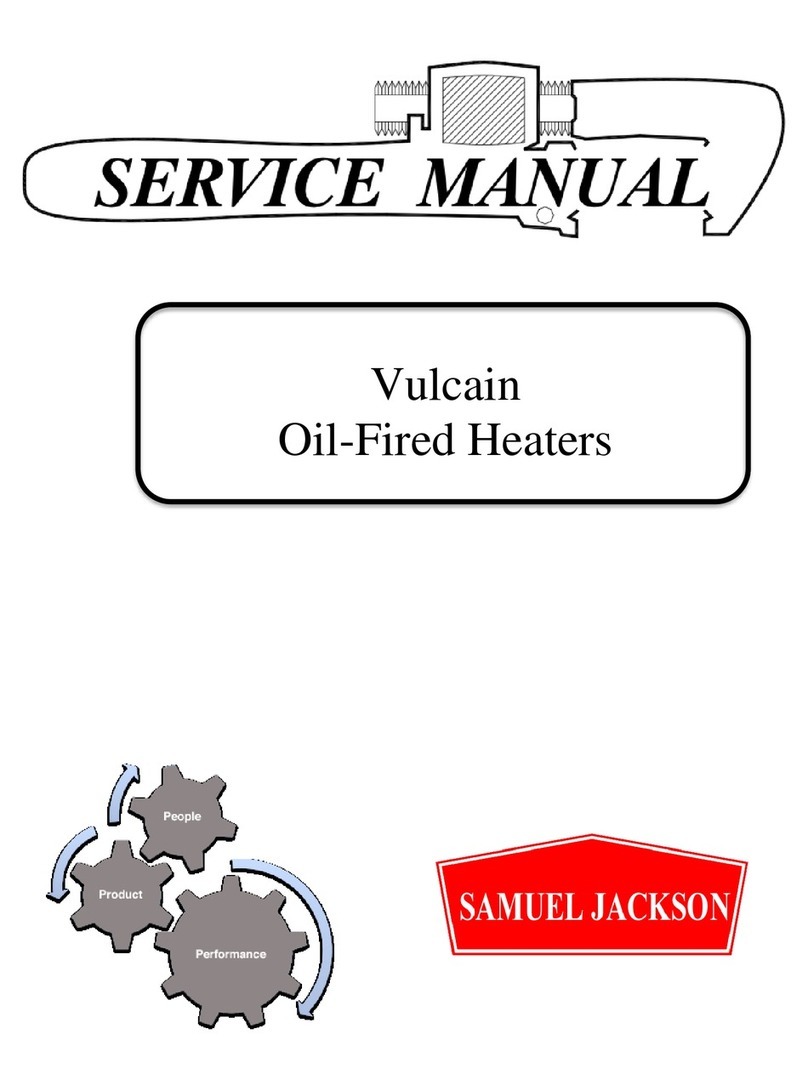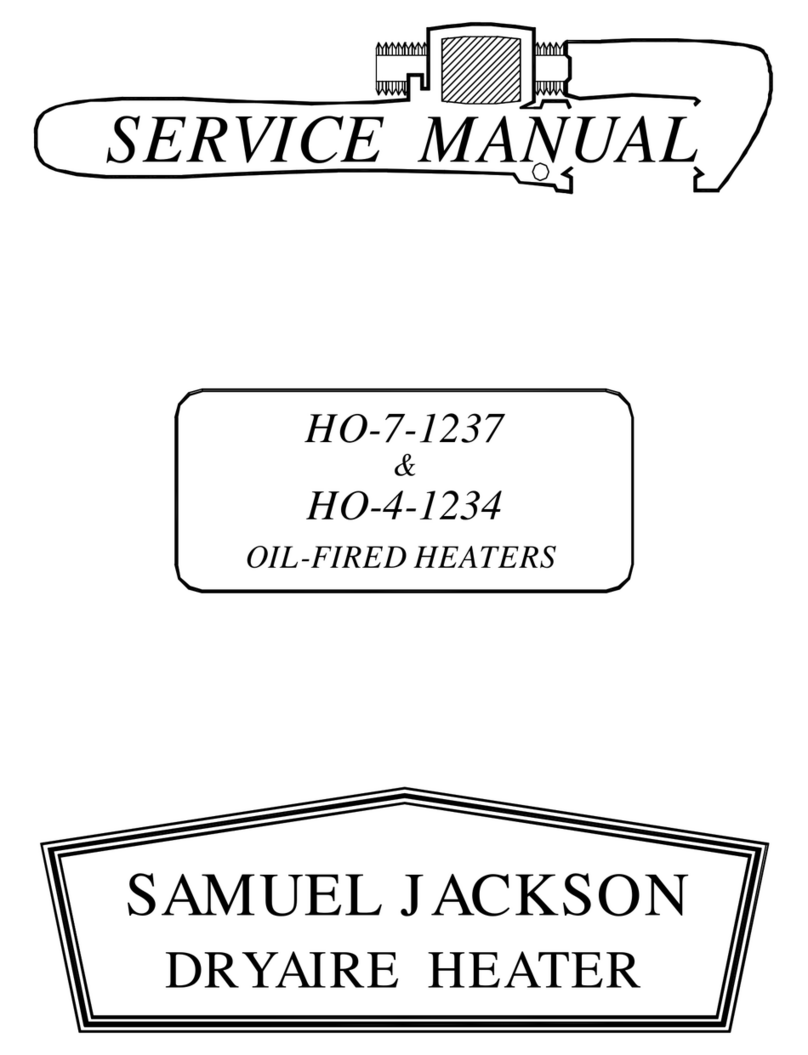USING
THE
17400
DIGITAL
TIEMPEBATURl3
CONTROL
(WITHTHE
16910
MODULATING HIGH TEMPERATURELIMIT)
The
17400
Temperature Control Assembly for Samuel Jackson Dryaire Heaters can be used with the
16910
ModulatingHighTemperature Limitto preventhightemperatureswhich canharm cottonqualityand, inextreme
cases, cause fires. These instructionswill provideoperating guidelinesfor use of this control arrangementwith
allSamuelJacksonDryaireHeaters.
PRINCIPLE
OF
OPERATION
The
17400
control assemblyuses two HoneywellUDC-3000digitaltemperaturecontrollers. The controlleron
the
!&
as you face the controlassembly is designatedthe "PRIMARY controller. The controller on the
riaht
is
designatedthe "HIGH LIMIT" controller. The PRIMARY controller has its thermocouple temperature sensor
mountedDOWNSTREAMof the mixpointinthe drying system. The MIGH LIMITcontroller has itsthermocouple
mountedupstream of the mixpoint. The PRIMARY controller watches the temperature after cotton has mixed
withthe air.
If
wet cotton isfed intothe system, the air iscooled and the PRIMARY controllersignalsthe HIGH
LIMITcontroller that more heat is needed to compensatefor this cooling. The HIGH LIMIT controller operates
the burner's gas valve to supply this heat, but in no case will the temperature be permittedto exceedthe limit
whichthe ginner has previouslyspecified. If drycottonisfed intothe systemthe reverse occurs. Inthe case of
achoke
or
large air leak, the HIGH LIMIT controller may not be able to contain the temperature within the
specifiedlimits and
it
will then shut down the burner to prevent a fire (with an appropriate ERROR code
on
burnerswith microprocessorcombustioncontrols).
NORM& OPERATIONPROCEDURE
There isaspring returnselector switchlocatedbelowthe PRIMARYcontrollerwith a
"1"
on the rightand a
"0"
on
the
left.
These are symbolsfor START-STOPoperations. Turnthe switchto
"1"
andrelease itto start the burner.
Turnthe switchto
"0"
to shut downthe burner. After turningthe switchto
"l",
pleasenotethat there isa preset
time delay to allowthe burner head and pipingto be purgedwith air. Followingthis delay, ignitionis triedand
shouldoccur immediately.
If
ignition is not successful and your model has microprocessor combustion
controls, observe the STATUS lightto see
if
it isflashing. If
it
is, go to the burner'scontrolcabinetand notethe
ERROR/AIARM code displayed on the localpanel. There is a decal at the controlcabinet and a page in each
servicemanual explainingthe numbers. It will be necessaryto pressthe RESET button on the burner's local
panelin orderto clearthe
ERROR
andrestartthe burner. Inthe case of failure inignition
or
failure inoperation,
the burner will automatically attempt to restart itself for a maximum of three attempts. Neither digital
temperaturecontroller will come on untilflame has beenestablishedinthe burner. This isto preventthe highly
responsivecontrolsfrom "windingup"duringthe air purgedelaytime and causingthe burner to come on with a
roar. When they do energize, the controllers will take
12
seconds to perform self-check operationsand then
displaythetemperatures.
There are four temperatures displayed at all times during burner operation. The PRIMARY control on the
left
shows twoandthe HIGH LIMITcontrolon the rightshowstwoas well. The lowerdisplayonthe PRIMARYisthe
temperaturewhich the ginner sets and is the only one he will adjust under normal circumstances. It isthe
temperaturedesired after the mixpoint. It is raisedand loweredwith the orange buttons below it. The upper
displayshows the actual temperature being reported by the downstreamthermocouple. On the HIGH LIMIT
controller,the lower display is the temperature which the PRIMARY control is feeding it (See "Principle
of
Operation"Section). The upperdisplayon the rightisthe actualtemperaturebeforethe mixpoint. By observing
the upper display on both controllers,it is possibleto estimate the wetness of the incoming cotton as they
will
movefarther apart asthe cottongets wetter.
Page
1






























